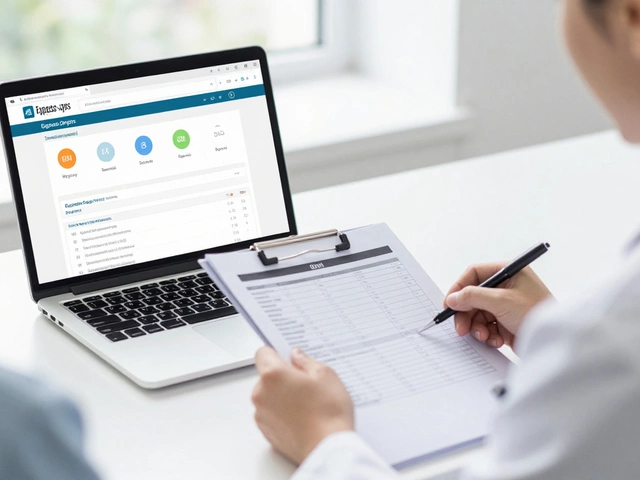If you ask ten people to name the most healing herb, you’ll probably get ten different answers. Some swear by turmeric for aching joints. Others can’t live without ginger for an upset stomach. And then there’s Ashwagandha, garlic, or holy basil—herbs with long track records and legions of fans.
Sorting through all these claims gets tricky. Every herb has its own ‘superpower,’ but picking one as the “most healing” depends on what you actually need. Looking for a boost to your immune system? Echinacea might be your thing. Fighting inflammation? Turmeric often takes the spotlight.
It’s not just tradition propping these herbs up. Many have serious research backing their benefits. Plus, you can find them everywhere—from the local grocery store to supplement shelves, and even in your grandma’s homemade cures. The trick is figuring out which one fits into your life and actually does what you want. That’s where we’ll start clearing the confusion and getting real about what works—and what doesn’t.
- The Big Debate: What Makes an Herb 'Healing'?
- The Heavyweights: Top Contenders for Most Healing Herb
- Why Turmeric Often Takes the Crown
- How Other Herbs Compare: The Hidden Gems
- Using Healing Herbs Safely at Home
- Picking What Works for You
The Big Debate: What Makes an Herb 'Healing'?
So what actually counts as a 'healing herb'? Here’s where things get messy. To some people, an herb feels healing if it helps with their headaches or gets them to sleep at night. To scientists, a healing herb has effects you can prove in a lab or clinic, not just from stories passed down the generations. And some folks want both: old-school wisdom with real, modern proof.
Usually, what makes an herb 'healing' comes down to a few things:
- Healing herb has bioactive compounds—like curcumin in turmeric or allicin in garlic—that actually have an effect on your body.
- It's got some track record for helping with certain problems, like fighting infections, reducing pain, or calming anxiety.
- There’s science behind it, not just stories. For example, a 2021 study found turmeric curcumin supplements helped ease knee pain for people with osteoarthritis almost as much as standard painkillers.
- It's safe to use for most people. You want an herb to help, not hurt.
But here’s why it gets tricky: not everyone reacts to herbs the same way. An herb that works wonders for your friend might not do much for you—or might even upset your stomach. Sometimes dosage, freshness, or even how you prepare the herb changes what you get out of it.
If you’re wondering what parts of the world really trust herbal remedies, check out these impressive stats:
| Region | People Using Herbal Medicine |
|---|---|
| India | 77% |
| China | 80% |
| United States | 35% |
| Europe (average) | 25% |
Bottom line: an herb gets the “healing” label when it helps with a real problem, has some research or clear tradition behind it, and can be used safely. But which herb tops the list? That’s where the real contest begins.
The Heavyweights: Top Contenders for Most Healing Herb
So, who actually tops the list when it comes to healing herbs? A few names show up in almost every culture and study. Let's break down the main players, what they actually do, and why people keep going back to them.
- Turmeric: This bright yellow spice is loaded with curcumin, a compound tied to fighting inflammation. Studies link turmeric to relief in joint pain, especially for folks with arthritis. In India, it’s been a kitchen staple and medicine cabinet go-to for thousands of years.
- Ginger: When your stomach feels off, ginger often does the trick. It helps with nausea from motion sickness, pregnancy, and even after surgery. Some research points to benefits for people with osteoarthritis, too.
- Garlic: Besides making food taste better, garlic slashes blood pressure and cholesterol numbers in some folks. It’s famous for fighting infections before antibiotics were even a thing.
- Ashwagandha: This adaptogen gets a lot of love for managing stress and anxiety. Small studies suggest it helps balance cortisol and support energy levels. Athletes sometimes use it to bounce back from tough workouts.
- Holy Basil (Tulsi): If you're looking for a natural way to smooth out stress and help your body handle tough days, holy basil could be your answer. It's tied to better mood and sharper focus.
Take a look at how these popular herbs stack up in some of the latest studies. These numbers aren’t a magic fix, but they give a decent idea of real effects.
| Herb | Main Benefit | Typical Use | Notable Study or Data |
|---|---|---|---|
| Turmeric | Reduces inflammation | 1-2g/day, capsules or powder | 61% of osteoarthritis patients found relief (2016, J. Med Food) |
| Ginger | Nausea relief, anti-inflammatory | 500mg-2g/day, fresh or capsules | 40% less nausea in chemo patients (2009, Support Care Cancer) |
| Garlic | Lowers blood pressure, cholesterol | 1-2 cloves/day, raw or capsules | Systolic BP drops by 8-10 mmHg (meta-analysis, 2015) |
| Ashwagandha | Reduces stress, boosts energy | 300-500mg/day, capsules | 30% less stress symptoms (2012, Indian J. Psychol. Med.) |
| Holy Basil | Reduces anxiety, supports mood | 300mg-2g/day, tea/capsules | Mood improved in 70% of users (2017, Evidence-Based CAM) |
If you’re hunting for the best healing herb for daily wellness, these aren’t just hype—they’re the real deal for a lot of people. Still, how your body reacts can vary. That’s why plenty of folks try a few before finding a favorite.
Why Turmeric Often Takes the Crown
Turmeric is the real front-runner when folks talk about the healing herb they trust most. You see it everywhere—from curries to golden milk lattes—and it’s not just a trend. The big claim to fame here is curcumin, which is the yellow chemical in turmeric that’s behind most of its benefits.
Plenty of research backs up turmeric’s reputation. Curcumin is like a superhero against inflammation. One big review from 2023 looked at over 30 studies and found that patients with arthritis who took turmeric had less joint pain—sometimes almost as much relief as people on over-the-counter meds. That’s wild, considering turmeric’s just a root you can pick up at any corner store.
Turmeric isn’t just for achy knees, though. People use it for everything from easing gut problems to helping slow down low moods. Some even use turmeric masks for clearer skin. The most talked-about perks include:
- Reducing inflammation and pain in joints and muscles
- Supporting digestion
- Helping boost mood if you feel a bit down
- Packed with antioxidants so your cells stay healthy
Here’s something that will surprise you: turmeric by itself doesn’t absorb well in your gut. Add black pepper or fat (like in coconut milk or olive oil), and you get much more bang for your buck. Seriously, without the pepper, you miss out on most of the good stuff.
| What Turmeric Helps With | How Much Used in Studies | Boosting Tip |
|---|---|---|
| Joint Pain (Arthritis) | About 500-2000 mg/day | Take with black pepper |
| Digestion | 1/2 tsp to 1 tsp powder in meals | Mix into warm milk or smoothies |
| General Inflammation | 500 mg twice daily | Combine with olive oil for better absorption |
Word of warning: turmeric can interact with blood thinners and other meds. Always ask your doctor if you’re making it a daily habit, especially if you take prescriptions.

How Other Herbs Compare: The Hidden Gems
Turmeric hogs the spotlight, but let’s be honest—there are a bunch of healing herb options out there that deserve a little more love. Some are regulars in kitchen cabinets, others might sound a bit exotic, but all pack a punch in their own ways.
Take Holy Basil (also called Tulsi). In India, it’s a go-to for stress and immune support. One study from 2022 found that folks who took regular Tulsi supplements felt less anxious and even slept better after six weeks. Another favorite: Ginger. Besides spicing up tea and curries, ginger’s actually been shown to help with nausea—think morning sickness and motion sickness both. Research published in "The American Journal of Obstetrics and Gynecology" says ginger can work as well as some anti-nausea meds, with far fewer side effects.
Let’s not forget Garlic. People have used it for thousands of years to tackle infections. Modern science backs this up: eating garlic regularly can slightly lower your blood pressure and cholesterol. Don’t expect it to do everything, but if heart health is your thing, it’s a solid bet.
Here’s a quick breakdown of how some hidden gem herbs stack up. Nothing fancy—just what the research shows they’re actually good for:
| Herb | Main Benefit | Bonus Fact |
|---|---|---|
| Holy Basil | Stress & anxiety relief | Used in Ayurvedic medicine for centuries |
| Ginger | Nausea and gut health | May help with post-workout soreness, too |
| Garlic | Heart health, mild infections | Some studies link garlic to lower cholesterol |
| Ashwagandha | Calms stress, boosts energy | Shows up in a lot of modern supplement blends |
Some herbs work best as part of daily routines. For example:
- Pop ginger chews for queasiness during car rides.
- Add minced garlic to stir-frys to sneak in a dose for your heart.
- Brew Holy Basil tea before bed if you’ve had a rough day.
If you’re after a reliable tip, rotate your herbs. Each one targets different issues, and mixing things up helps you avoid overdoing it on any single supplement.
"The real strength of herbal medicine is not in any one miracle plant, but in how these herbs work together to support the whole body." – Dr. Tieraona Low Dog, MD, integrative medicine expert
Don’t just grab the trendiest bottle at the store. Check what your body actually needs, read up on how the herb works, and always talk to your doctor before trying anything new—especially if you take meds already.
Using Healing Herbs Safely at Home
Jumping into herbal supplements at home feels easy, but there are a few basics you should know to keep things safe. Even something natural can mess you up if you use it wrong or mix it with certain meds.
First, go with quality. Not all supplements are the same. Choose brands that show third-party testing or certifications. Cheap bottles from random websites might be packed with fillers or even the wrong plant altogether. The healing herb you want is only helpful if it’s actually what’s in the bottle.
- Start small: Try a low dose at first—even if your friend swears by taking double. Herbs can hit people differently based on genes, age, and even what you had for breakfast.
- Check interactions: Ask your doctor (or at least Google) before you mix herbs with prescription meds. For example, garlic thins the blood, so it doesn’t play well with blood thinners.
- Watch for allergic reactions: Even if you’re not allergic to foods, some herbs surprise people. Look out for a rash, funny feeling in your mouth, or stomach trouble when you try something new.
Fresh or dried doesn’t always matter, but be sure what you’re buying. For home teas or cooking, fresh ginger or turmeric root delivers a punch. Capsules and tinctures work best if you want a steady dose and zero prep work.
Stick to trusted sources of info—reliable health sites, doctors who understand herbs, or registered herbalists. Random social media tips? Take with a grain of salt.
Last thing: give yourself time. Results are usually slow and steady, not overnight miracles like you see in ads. Track what you use and how you feel, so you notice what actually helps.
Picking What Works for You
With shelves full of supplements and all kinds of online advice, finding the right herb can be overwhelming. It really boils down to your health goals and what’s going on with your body. Looking for help with sleep, stress, digestion, or joint pain? Each of these issues calls for a different approach.
First, get real about what you want: Do you just want a boost for your immune system, or are you looking for help with chronic aches? For everyday stress and sleep, lots of people find results with ashwagandha or chamomile. For sore joints or inflammation, turmeric almost always makes the top of the list. Ginger and peppermint both shine if your main complaint is stomach trouble. Want to keep your heart healthy? Studies show garlic can help lower blood pressure in some people.
If you’re new to herbal supplements, here are a few practical tips to get started:
- Talk with your doctor or pharmacist. This one’s not just a formality. Herbs can interact with prescriptions and mess things up fast, so make sure you double-check.
- Stick with one new herb at a time. Start small and see how your body reacts before adding anything else to the mix.
- Check if there’s actual research behind the herb. Look for basics—a trusted brand, and clear labeling on dosage, form (like capsule or tea), and directions.
- Be patient. Herbs work differently than prescription meds. Sometimes you don’t see a clear change right away, especially with things like mood or energy.
No herb does it all, and results aren’t always guaranteed. Track how you feel, read up when in doubt, and don’t believe everything on a flashy supplement label. In the end, the best healing herb is the one that helps you feel better without causing problems somewhere else.










